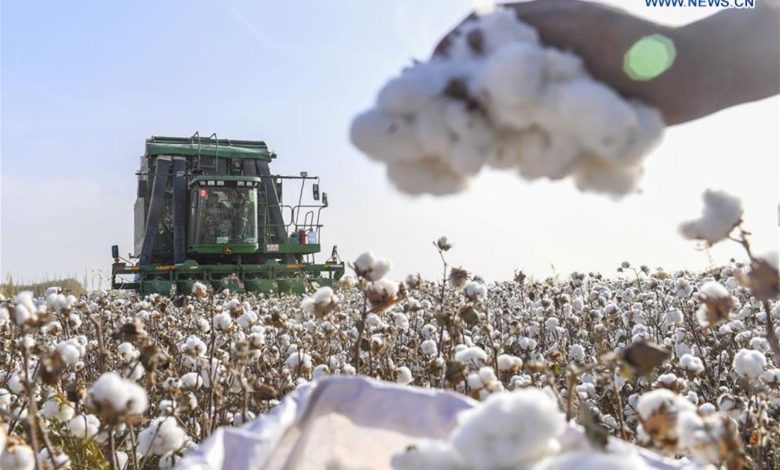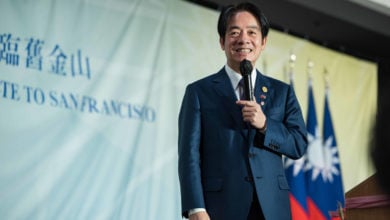
Once again the People’s Republic of China is being accused by the U.S. government and its junior imperialist partners of egregious human rights violation against the Muslim Uyghurs of the Xinjiang – Uyghur Autonomous Region.
The U.S. Congress recently imposed sanctions on Chinese officials over the alleged use of forced labor in the cotton-rich northwest territory of Xinjiang, labor painted by the corporate Western media as “neo-slavery.”
With dubious sources, the recent exposé has led a slew of retail corporations such as Nike, Burberry and PVH — the parent of Calvin Klein and Tommy Hilfiger — and most notably H&M Group, to stop buying cotton sourced from Xinjiang, claiming to be outraged at these allegations.
Humanitarian imperialism
The so-called forced labor rhetoric is unfounded. So is the overall myth that undergirds it, namely that the Chinese government as a part of a “war on Islam” has incarcerated upward of 1 million Uyghurs and ethnic minorities as part of a genocide.
These tall tales, while they evoke much emotion through media manipulation and the strategy of humanitarian imperialism, can be traced mostly to one person — the ultra-right-wing Christian fundamentalist Adrian Zenz. Zenz has never been to Xinjiang, but feels it is his “God-given” mission to save the Muslim Uyghurs from the “tyrannical” Chinese Communist Party.
Zenz’s dubious studies have no basis in fact or field study. They form the backbone of the forced labor claims made by the Newlines Institute for Strategy and Policy, and from there are repeated by major news outlets as if they were fact.
The mechanized cotton harvesting rate in Xinjiang is nearly 70%, according to Elijan Anayat, spokesperson of the Information Office of Xinjiang’s regional government. The seasonal nature of the work could hardly be described as slavery since workers flock to the region during harvest season to pick cotton because it pays better than their current jobs.
The widely published reports of Zenz, the China whisperer for Western imperialism, are also behind the claims of genocide and mass incarceration. These studies were not published in peer-reviewed journals where veracity is monitored by academic institutions. They appeared in The Journal of Political Risk, a publication headed by former NATO and U.S. national security state operatives.
Hypocrisy of the Western corporations
The conglomerating of Nike, Burberry, PVY, H&M and other corporations to stand in defense of “human rights” and against “labor abuses” in China smacks of hypocrisy. They themselves are dyed-in-the-wool serial exploiters of the labor of predominantly Muslim Southeast Asian women and children.
In its sweat shops in Indonesia, a predominantly Muslim country, Nike has been denounced for years for employing children. These children work long hours at poverty wages, and are crowded into factories ridden with fire hazards.
H&M does not have a humanitarian leg to stand on either. The company failed to deliver justice and reparations to workers in Bangladesh when their Rana Plaza Factory collapsed after being warned by workers that conditions were unsafe. More than 1,100 workers were killed. H&M was no small time player in Bangladesh — the company contracted more than 200 factories there.
The company was the first and the largest brand to sign on to the 2013 Accord on Fire and Building Safety. The Asia Floor Wage Alliance 2018 report on working conditions at H&M suppliers’ factories stated that “due to failed compliance with the accord, 78,842 garment workers in Bangladesh continue to produce garments for H&M in buildings without fire exits.”
It’s not just in Bangladesh. In a Wage Alliance report on H&M factories overseas, based on interviews with 251 workers at 12 H&M suppliers in Cambodia and four suppliers in India, researchers found that workers were toiling from nine to 17 hours a day. This exceeds the 12-hour limit on weekly overtime set by H&M. Additionally, workers reported that employees who were pregnant were often fired from their jobs.
US companies seek to cut off Chinese competition
In addition to being super exploiters, what also unites all these companies boycotting Chinese cotton is this: They are members of the Better Cotton Initiative, a nonprofit/nongovernmental organization that claims to be independent, but is funded in part by the U.S. Agency for International Development. USAID is an arm of the U.S. government with a long history of fomenting counterrevolutionary and reactionary coups and regime change across the Global South.
Additionally, BCI Council Chairperson Marc Lewkowitz is the CEO of Supima Cotton, which grows cotton in the United States. Supima is competing with Xinjiang cotton.
While the U.S. government and U.S. corporations have an interest in boycotting Chinese cotton, their “evidence” of forced labor of Uyghurs is weak. According to Reuters, even the BCI’s Shanghai representative said that in studies made since 2012 it has “never found a single case related to incidents of forced labor” in Xinjiang, and it would continue its role in Xinjiang.
Striking at China’s cotton and textile industry, key pillars of the national economy, is an attempt by the United States and other imperialist powers to isolate China from the global market, where U.S. companies would have to compete with companies from China.
China is no longer the “workshop of the world” but a major, if not central, economic engine of the global economy. With 1.4 billion people, it has one of the fastest growing and most dynamic economies in the world, and is the only large country to experience positive economic growth in 2020.
The reality is that China is enmeshed in the global supply chain in ways that prevent it from being easily isolated. Many Western corporations would find it hard to simply decouple themselves from the Chinese economy.
Even The New York Times has had to acknowledges this, pointing out: “China is the source of nearly half of all cotton fabric exported around the world. Most of that material includes cotton harvested in Xinjiang.”
China today does not simply produce, but consumes as well. It has an expanding middle class, and nearly 1 billion workers and peasants have been lifted out of poverty.
H&M, for example, has 502 stores in China — the third most of any country after the United States and Germany, according to its website. According to the Global Times: “China accounted for 5.2 percent of H&M’s total sales in 2020, the fourth-largest market after Germany, the US and the UK. Clearly the Chinese market is extremely valuable to H&M.”
Chinese consumers have responded to the racist targeting of their country with a boycott of their own. This has forced H&M to come out with a statement all but recanting the position that elicited such a strong reaction from the Chinese public in the first place.
This latest episode in the new Cold War with China has caught international retail corporations in a web spun by U.S. imperialism’s aggression. This campaign is meant not only to knock China down economically, but also to Balkanize the country based on ethnic and national differences similar to the strategy employed against the Soviet Union and Yugoslavia. But Washington’s goals may not be so easily achieved.






